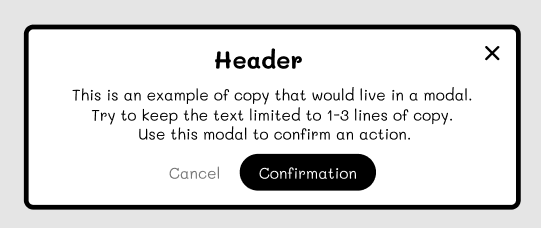The Power of Low-Fidelity
“I know you’re not there yet, but…”
This was how our brand designer began his feedback to one of my product designers in design critique. The product designer presented early designs for a feature he was working on. Most importantly, his work was low-fidelity. It used simple black-and-white components and a casual, hand-written font.
 An example of a low-fidelity modal component. Not what the designer showed.
An example of a low-fidelity modal component. Not what the designer showed.
His designs were still early, and subject to change. He needed feedback on high-level flows and interactions, not colors or fonts or spacing. Exploring those design details, and getting feedback on that, would have been a waste of time. The fidelity of his work matched the fidelity of his thinking.
The brand designer ended that statement with some general visual design advice for when he moves into high-fidelity. It took less than a minute. He didn’t rabbit-hole on a detailed, point-by-point critique of the entire design. How could he? There was no visual design. His feedback matched the fidelity of what was shown. The product designer got the feedback he needed, and the brand designer gave feedback that played to his strengths.
That simple interaction demonstrated the power of showing low-fidelity work.